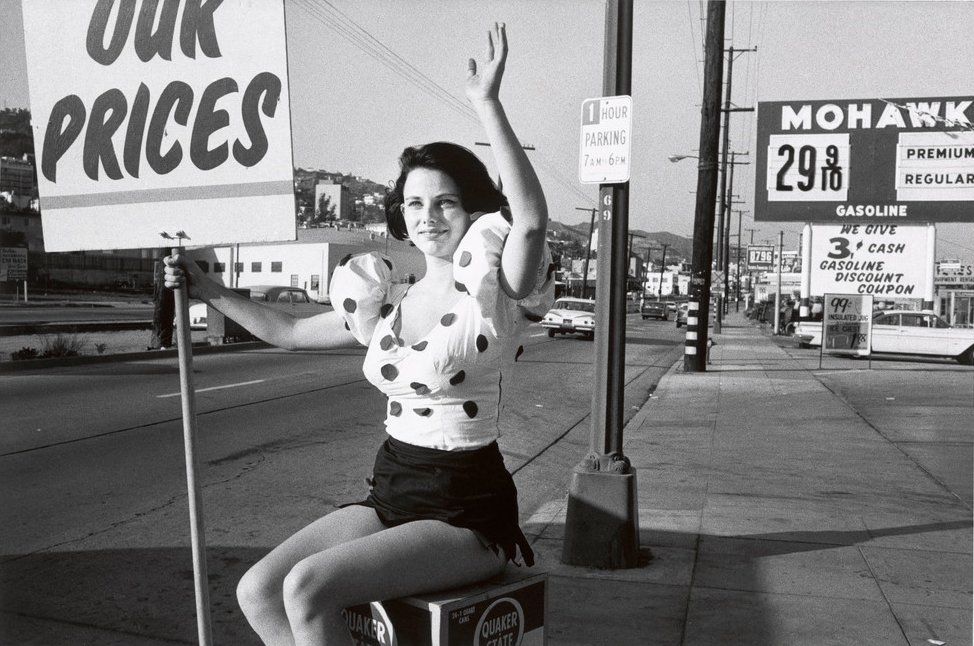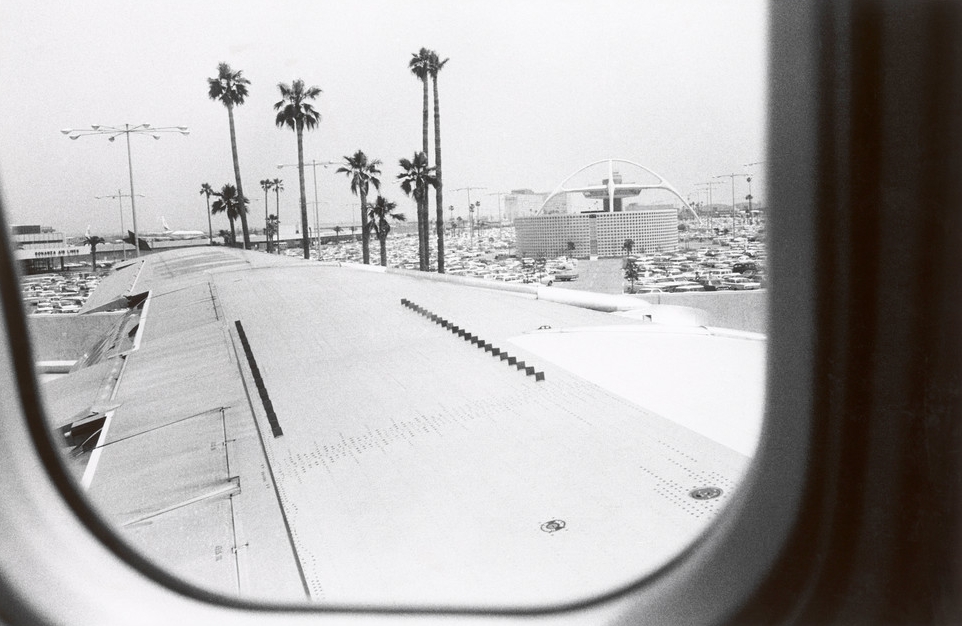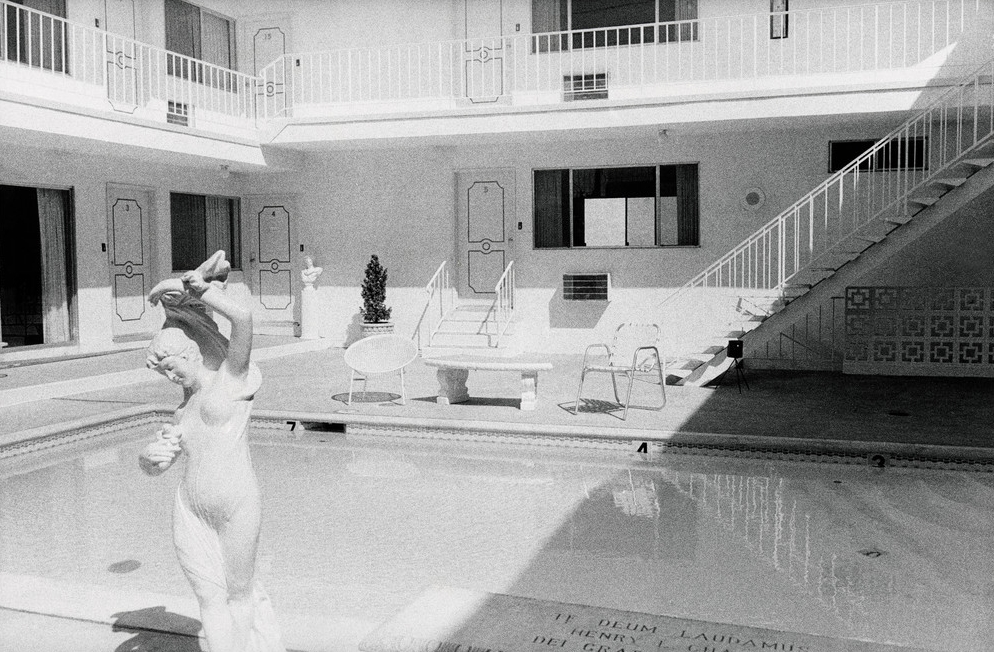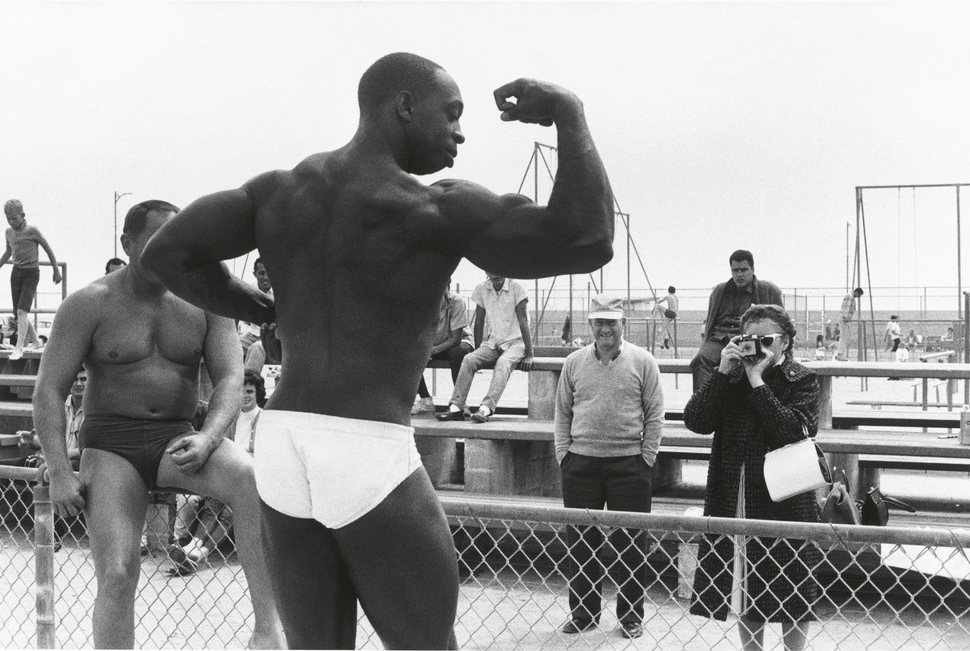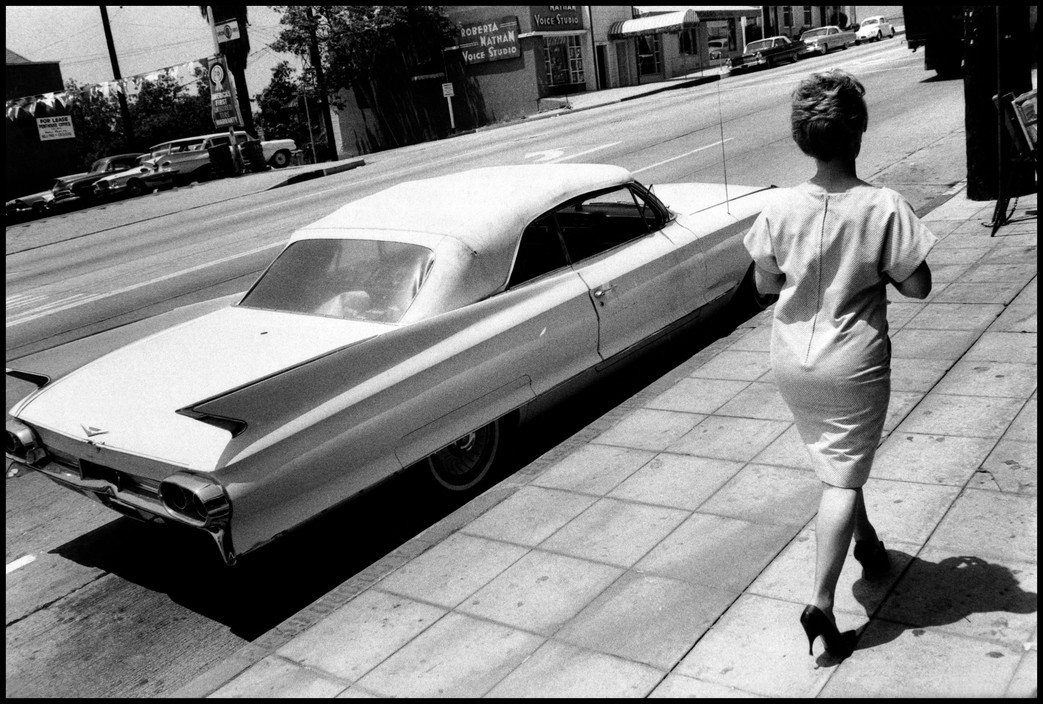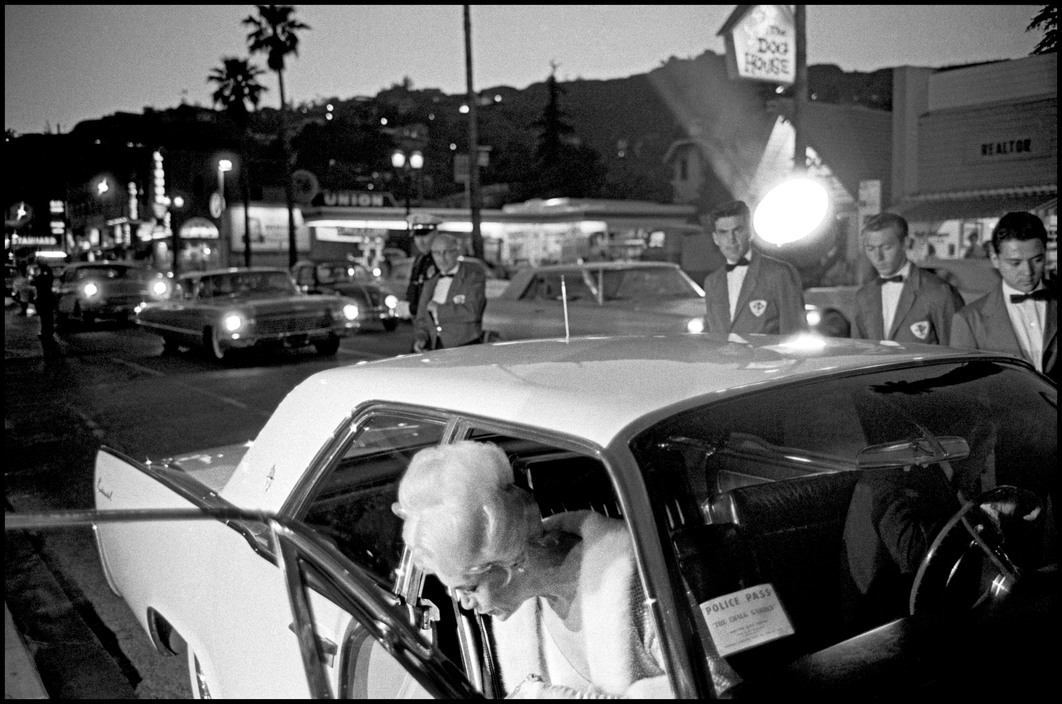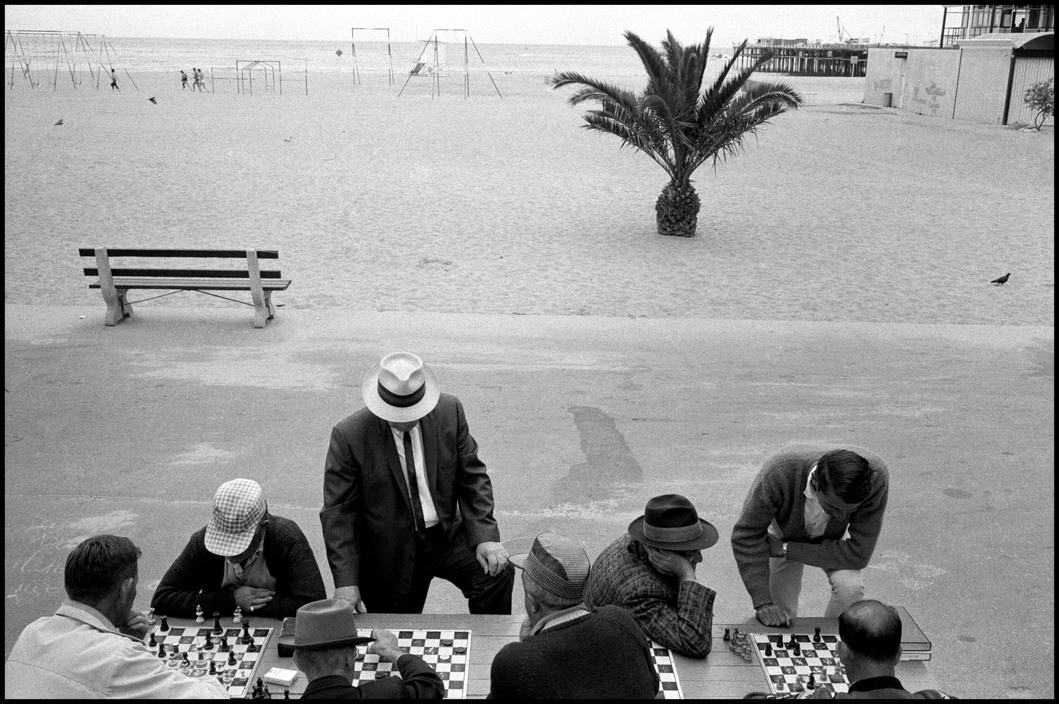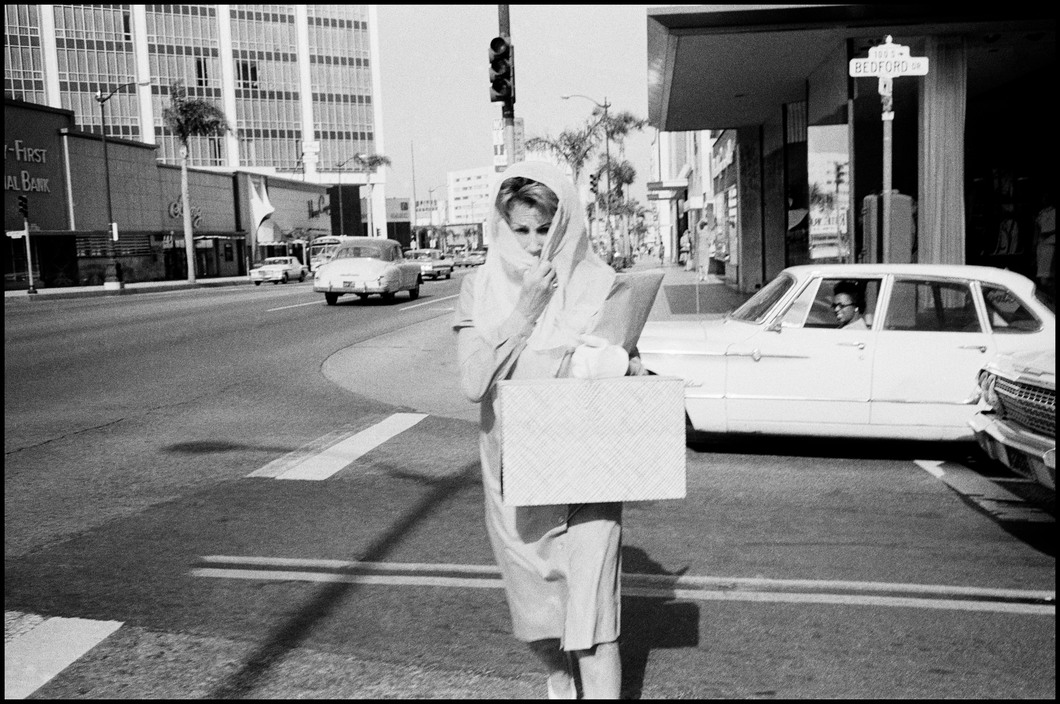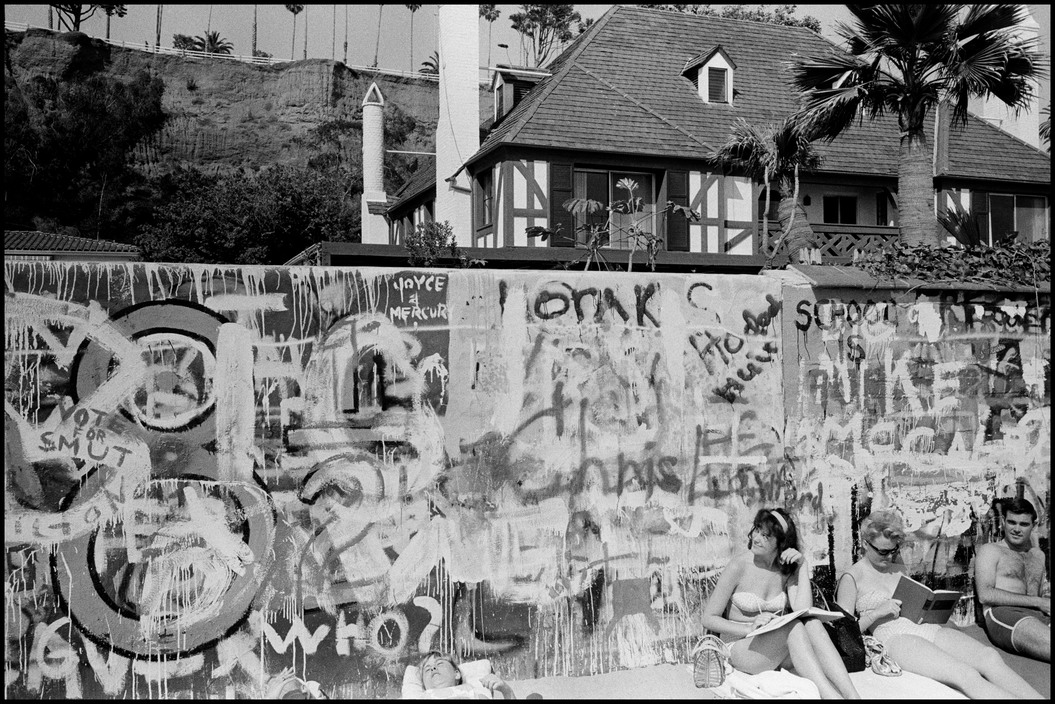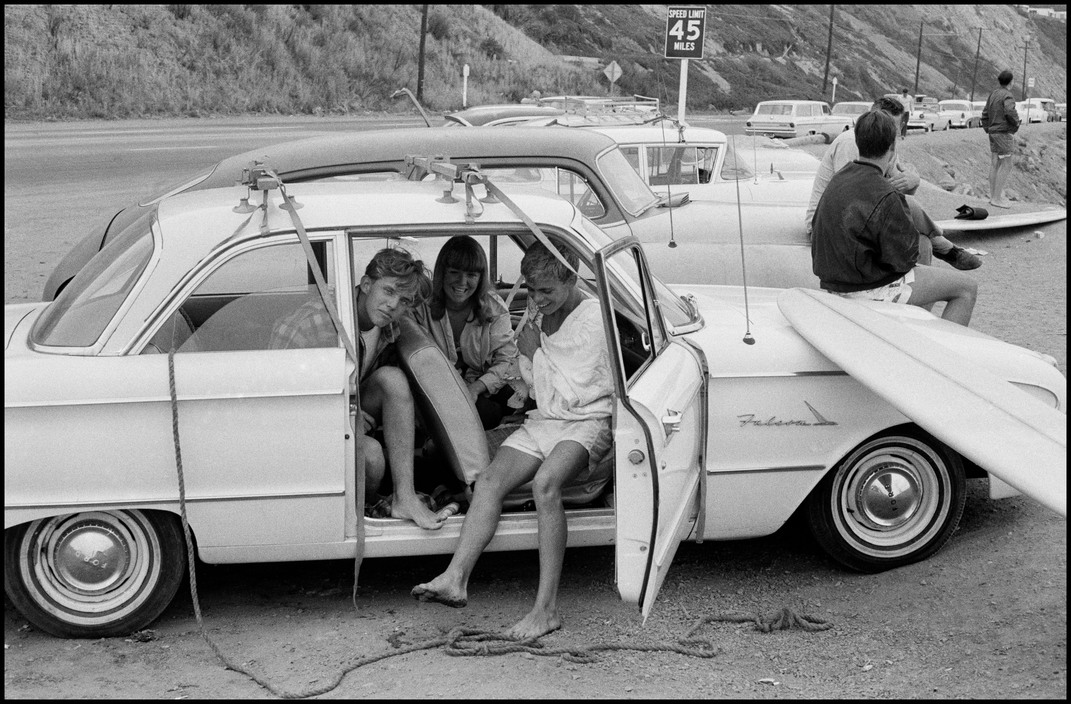Magnum photographer Bruce Davidson is most known for his photographs of the teenage gangs of New York City in the 1950s. In 1964, Esquire magazine commissioned him to take photographs of Los Angeles. For whatever reason, the photographs were rejected. In Davidson's own words: "Esquire’s editors sent me to Los Angeles, and when I landed at L.A. International Airport I noticed giant palm trees growing in the parking lot. I ordered a hamburger through a microphone speaker in a drive-in called Tiny Naylor’s. The freeways were blank and brilliant, chromium-plated bumpers reflected the Pacific Ocean, but the air quality was said to be bad. People looking like mannequins seemed at peace on the Sunset Strip while others were euphoric as they watered the desert. I stood there ready with my Leica, aware of my shadow on the pavement. I walked up to strangers, framed, focused, and in a split second of alienations and cynicism, pressed the shutter button. Suddenly I had an awakening that led me to another level of visual understanding. But in the end, for some unknown reasons, the editors rejected the pictures, and I had to return home with a big box of prints, put them in a drawer, and forgot all about the trip." Today, venerable publishing house and champion of print, Steidl, is releasing the photographs in beautiful book form. You can purchase here.
The Photographic Work by F.C Gundlach
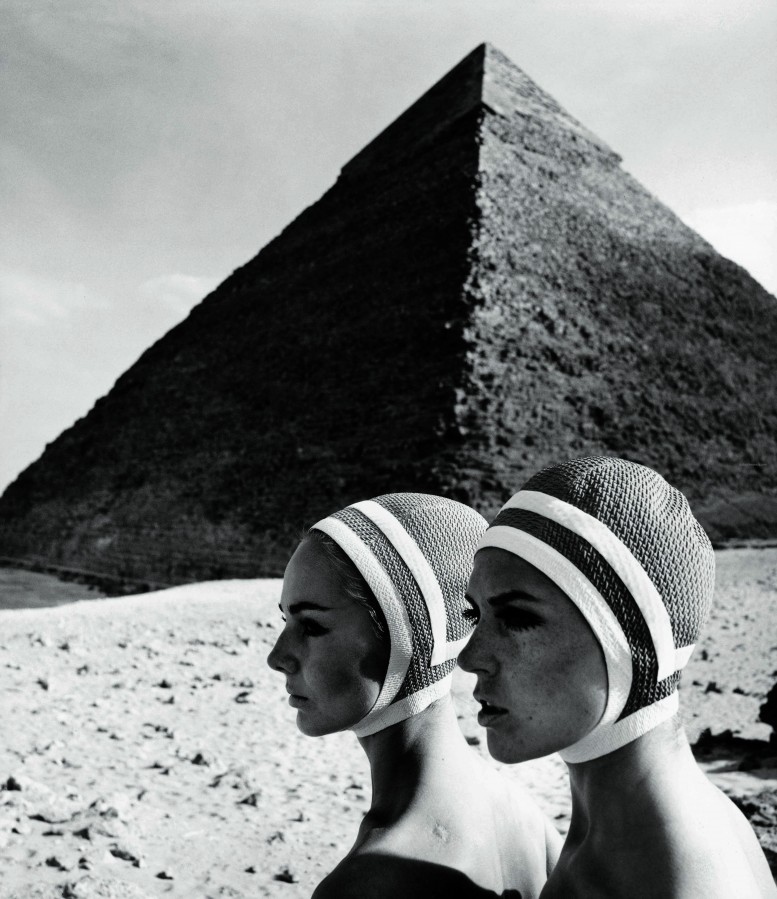 "Op Art-Fashion“, Gizeh/Ägypten 1966 In: Brigitte 10/1966 © F.C. Gundlach
"Op Art-Fashion“, Gizeh/Ägypten 1966 In: Brigitte 10/1966 © F.C. Gundlach
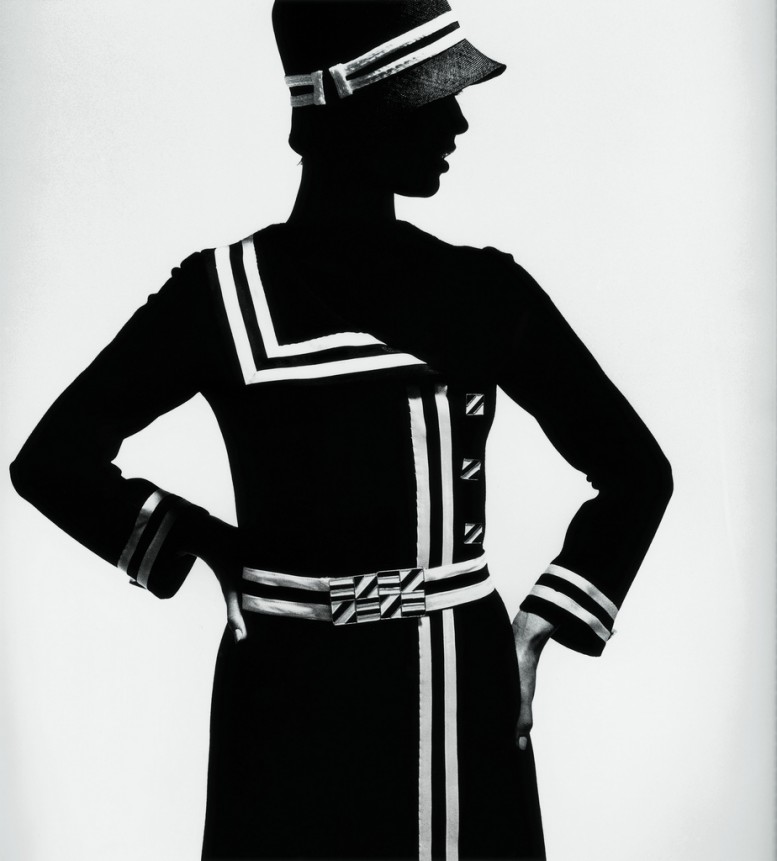 "Op Art-Silhouette“, Jerseymantel von Lend, Paris 1966 In: Brigitte 4/1966 © F.C. Gundlach
"Op Art-Silhouette“, Jerseymantel von Lend, Paris 1966 In: Brigitte 4/1966 © F.C. Gundlach
An extensive monograph of F.C. Gundlach's photography will be released this summer. "This definitive monograph brings F.C. Gundlach’s fashion work together for the first time in an extended way and establishes him as one of the most distinguished German fashion photographers of the post-war era. F.C. Gundlach placed fashion in the focus of his work for more than 40 years. His work presents not only the history of fashion, but also the poses, gestures, locations and atmosphere, which defined the changing ideals of beauty over decades. Alongside this work, Gundlach also created empathetic portraits, reportages and traveled intensively around the world. On his assignments he always worked closely together with the editors and art directors. His photographs for high-circulation magazines shaped the public’s perception of the permanent changing fashion. Yet his black-and-white and color photography also captured the spirit of its time, embodying the optimism of the meager days after the war, from the New Look to the swinging sixties, the op and pop art through to the highly staged photographs of the eighties." www.steidlville.com

